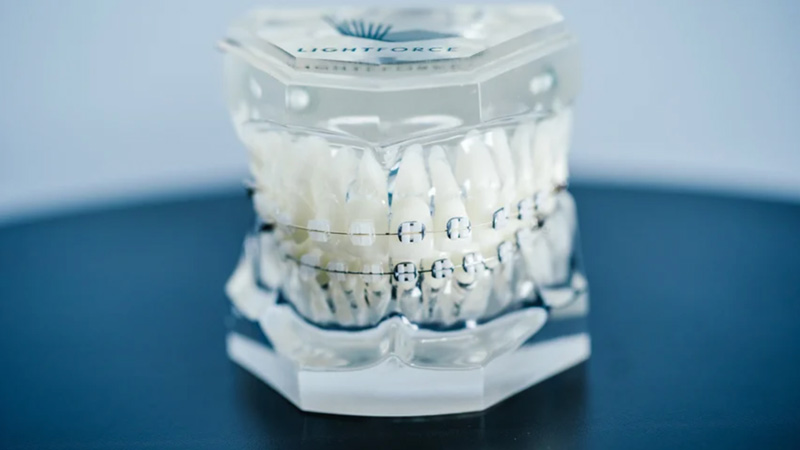The Benefits of Picking a Cumming Orthodontist for Your Braces and Aligners
Comprehensive Guide to Orthodontics Procedures for Fixing Dental Misalignments
In the world of orthodontics, the trip to achieving a flawlessly aligned smile involves a myriad of procedures tailored to correct dental imbalances. From typical dental braces to unseen aligners and even surgical options, the area of orthodontics offers a series of services to address differing levels of dental irregularities. Understanding the intricacies of each procedure, including their mechanisms, benefits, and potential disadvantages, is essential in making informed choices regarding one's orthodontic treatment. As we browse via the thorough guide to orthodontic treatments for fixing oral imbalances, the elaborate details of each technique will certainly unravel, clarifying the course towards a practical and unified dental positioning.
Orthodontic Procedures Overview

In enhancement to clear aligners and typical braces, orthodontists might additionally recommend various other interventions like headgear, palatal expanders, or retainers to attend to details placement concerns (cumming orthodontist). These procedures are tailored to every patient's one-of-a-kind requirements and may entail a mix of therapies to accomplish the desired outcomes. Normal adjustments and tracking are vital components of orthodontic treatment to guarantee progress gets on track and to make any kind of necessary adjustments along the road. By going through orthodontic procedures, patients can not just attain a straighter grin however likewise enhance their overall dental health and function.
Conventional Dental Braces: Exactly How They Work
When thinking about orthodontic treatments for dental imbalances, standard dental braces stick out as a time-tested method for fixing teeth positioning. Traditional dental braces include braces, wires, and bands that collaborate to apply constant pressure on the teeth, gradually moving them right into the wanted positioning. The brackets are affixed to the teeth using an unique adhesive, and the wires are threaded with the brackets. By changing the tension of the cords, orthodontists can control the instructions and pressure put on each tooth, leading them into proper positioning with time.
As pressure is used to the teeth with the dental braces, the bone surrounding the teeth is reshaped to sustain the new tooth placements. Individuals will need routine changes at the orthodontist's office to ensure the braces continue to apply the right stress for effective teeth motion.
Undetectable Aligners: Benefits And Drawbacks
These clear, personalized trays are virtually undetectable when used, making them an attractive choice for people seeking a much more cosmetically pleasing orthodontic therapy. Individuals can remove the aligners before eating or brushing their teeth, minimizing the danger of food obtaining stuck in the appliance and streamlining the cleaning procedure.

Surgical Orthodontic Options
Surgical treatments in orthodontics present feasible alternatives for attending to intricate dental misalignments that might not be effectively resolved through standard orthodontic therapies. While undetectable aligners and typical dental braces can fix numerous orthodontic concerns, particular cases call for medical treatment to attain optimum outcomes. Surgical orthodontic options are normally advised for serious malocclusions, substantial jaw disparities, and cases where the underlying bone framework needs modification to accomplish proper positioning.
One usual medical orthodontic procedure is orthognathic surgical procedure, which involves repositioning the jaws to remedy useful issues such as difficulty speaking or eating. This surgical procedure is frequently performed in collaboration with an orthodontist that assists align the teeth before and after the treatment. Surgical orthodontics might additionally entail treatments to subject affected teeth, eliminate excess gum cells, or improve the jawbone to produce an extra unified facial profile.
Before you could look here taking into consideration medical orthodontic choices, patients undertake a thorough examination to figure out the requirement and potential advantages of such interventions. invisalign. While surgery may seem complicated, it can substantially boost both the function and looks of the smile in cases where standard orthodontic treatments fall short
Retainers and Post-Treatment Care

Post-treatment care involves following the orthodontist's instructions faithfully. This might consist of appropriate dental hygiene techniques, attending follow-up visits, and wearing the retainers as prescribed. Failing to abide by post-treatment treatment guidelines can lead to regression, where other the teeth slowly return in the direction of their original settings. Consistent retainer wear, good oral health, and routine oral examinations are necessary for maintaining the results accomplished via orthodontic surgery and ensuring the long-lasting security of the fixed oral positioning.
Final Thought
In final thought, orthodontic treatments provide numerous options for correcting dental misalignments. Surgical orthodontic options are readily available for much more severe misalignments. On the whole, orthodontic treatments can properly improve oral wellness and aesthetic look.
As we browse through the thorough guide to orthodontic procedures for dealing with oral imbalances, the complex details of each technique will certainly unfold, dropping light on the path towards a useful and harmonious dental positioning. - orthodontics
One of the most typical orthodontic treatments is the use of dental braces, which consist of steel braces and cables that apply gentle pressure to gradually change teeth right into the preferred position.When considering orthodontic treatments for oral imbalances, typical braces stand out as a reliable method for fixing teeth positioning. In addition, unseen aligners might not be appropriate web link for complex orthodontic problems that require even more substantial teeth activity, as they are usually suggested for mild to modest cases. Retainers are tailor-made orthodontic gadgets designed to hold teeth in their fixed settings after the completion of orthodontic treatment.